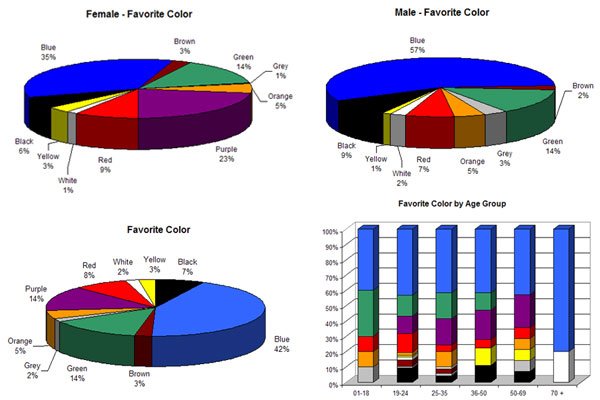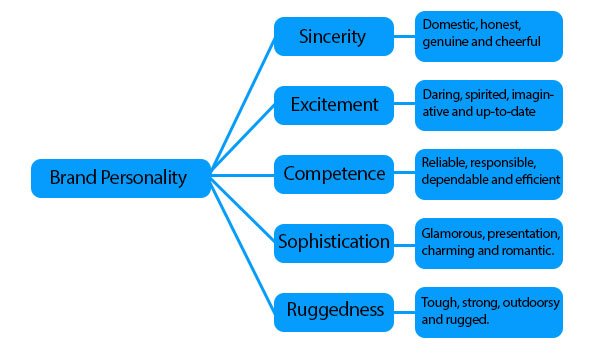The Psychology of Color in Branding
For most creative designers, the psychology of color in design is about the meaning of colors for the consumer and how each color represents the business niche in the visual design; the gold is wealth, the green is nature, the red is danger and the blue is for coolness. However, the usage of colors is not a straight forward theory and empirical studies suggest there is a certain arbitrariness to ascribing meaning to a color. Many factors contribute the psychology of colors and are used in design and branding. Below we can describe some of these factors more concretely.
Colors have a noticeable impact on consumer behavior. While sound and texture contributes to a buying decision for most consumers with 7% in total. The color and visual appearance contribute 93% in affecting the consumer during shopping, which puts color at the top of the important elements that should considered during the design process, based on a review of the literature. Determining the color theme or combination for the brand is not a sole responsibility for the design and the creative team. Both the design department and marketing department take part in the process of choosing the brand color. This responsibility expands to other stakeholders inside the company or organization based on the business strategy and company size.
Determining the best color theme for the brand or product is done in an early stage of the production as it affects different aspects of the product development such as the product design, branding materials, advertising campaign and more. Therefore, the brand color is chosen based on the marketing research process. In this stage, the marketing team is responsible for collecting and analyzing data about the consumer. The data is processed to different departments including the design team who work with marketing experts to choose the best colors that help form the product brand from an organizational perspective and affect the consumer’s purchase decision from another.
While many theories discuss when exactly a brand color is selected during the production process and who are the stakeholders that are responsible for making this decision, it is generally agreed that choosing the color should be in the early stage of the new product development (NPD) or branding an existing product or service.
Are Color Preferences General or Personal?
Do you see yellow as representing happiness? Red for security? Or purple for dignity? As a designer, I have been asking myself –are the meanings of colors universal and is the definition of each color taken into consideration when designing for clients from different cultures? We know intuitively that they are charged with meaning.
Based on the Color Determined by Experience article for Discovery News, Karen Schloss, a graduate student in psychology at the University of California, describes her attraction to the purple color because her sister’s bedroom was purple and she had positive experience toward this color. Another study suggests that Japanese women like the light colors while the dark yellow is generally less attractive than other colors in different cultures. Therefore it is important to remember cross-cultural differences while branding with color.

Based on the above studies and other related research, many factors affect how consumers find a color appealing and subsequently are attracted to a specific color theme. While the psychology of colors has generic impressions, those factors should be considered when designing a brand or a campaign for specific audience type:
Culture. If the advertising campaign is focusing on a specific country or region, the colors associated with this region should be considered in the brand design or the marketing campaign design.
Experience. Previous experience with a specific color affects how the consumer is attracted to the product. For example, the color can reflect childhood toy or room colors.
Gender. Based on research by Joe Hillock ,the most favorite color for men is blue, while the most favorite colors for women are blue and purple. While men prefer bright colors, women prefer soft colors.
Education: the level of knowledge and education for the consumer affects his or her taste and visual experience.
In addition to the above factors, other demographics can affect how consumers favorite colors such as the age group. Gathering data concerning the above factors during marketing research helps in having a better understanding about consumer preferred colors and which color theme to select during the branding process.
Colors and Brand Personality
Generally speaking, each product or brand has its own personality or identity. Aside from the psychology of colors, a brand personality plays an essential rule in choosing the proper brand color. Jennifer Aaker, psychologist and Stanford professor, identifies five main categories of the brand personality, each category or type includes number of personality that can be applied to a brand or product. These categories include:
Sincerity, the personalities that cover this this type are: domestic, honest, genuine and cheerful.
Excitement, the personalities that are ascribed to this type are: daring, spirited, imaginative and up-to-date.
Competence, the personalities that are ascribed to this type are: reliable, responsible, dependable and efficient.
Sophistication, the personalities that are ascribed to his type are: glamorous, presentation, charming and romantic.
Ruggedness, the personalities that are ascribed to this type are: tough, strong, outdoorsy and rugged.

While each brand or product should have a strong and singular personality, some products merge between the characteristics of two personalities. In this case, one personality appears to be more dominant than the other.
Understanding personalities can help to ascertain the color range that suits the target audience. For example, a ruggedness type may suggest using strong bright colors that reflect strength and power –unlike sophistication typologies, as colors can be soft such as purple or pink.
In sum, the psychology of colors is to a given extent arbitrary, yet we find generalizations, we can use in branding. While we can admit there are some consistency in consumer color preferences, many factors affect how the end consumer sees specific colors used as attractive compared with others. These factors include the location, gender, education and other demographic, psychographic, and technographic variables. The data concerning the target consumer perception for colors should be collected during the marketing research process. Both the marketing team and design team are involved in this process.
In addition to color psychology, brand personality plays an essential rule in color acceptance. Therefore both factors need to be assimilated and analyzed within the branding process to choose the best color for the target consumer.






